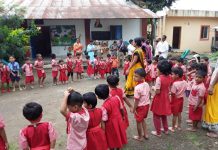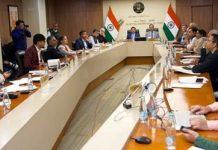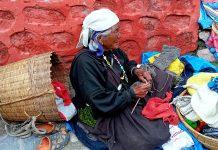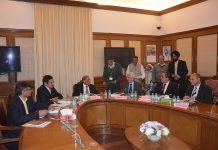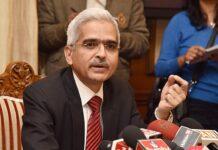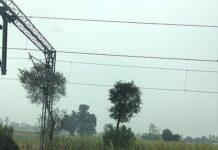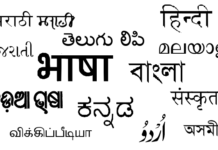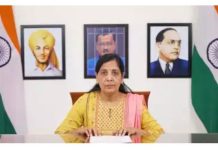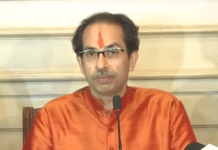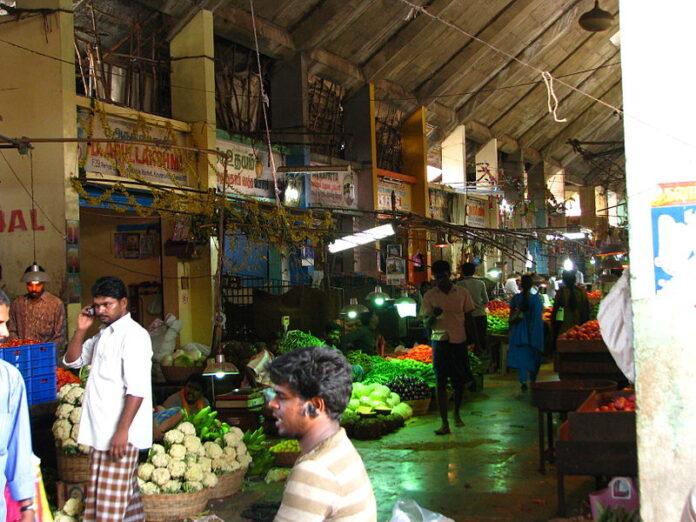Union Finance Minister Nirmala Sitaraman has tabled Economic Survey 2022-23 in Parliament.
Highlights of Economic Survey 2022-23: Thrust On Rural Development
The Survey notes that 65 per cent (2021 data) of the country’s population lives in the rural areas and 47 per cent of the population is dependent on agriculture for livelihood. Thus, the focus of the government on rural development is imperative. The Government’s emphasis has been on improving the quality of life in rural areas to ensure more equitable and inclusive development. The aim of engagement of the government in the rural economy has been “transforming lives and livelihoods through proactive socio-economic inclusion, integration, and empowerment of rural India.”
The Survey refers to the National Family Health Survey data for 2019-21 which illustrates a significant improvement vis-à-vis 2015-16 in an array of indicators concerning the quality of rural lives, including, inter alia, access to electricity, presence of improved drinking water sources, coverage under health insurance schemes, etc. Women empowerment has also gained momentum, with visible progress in female participation in household decision-making, owning bank accounts, and use of mobile phones. Most of the indicators concerning the health of rural women and children have improved. These outcome-oriented statistics establish tangible medium-run progress in rural living standards, aided by the policy focus on basic amenities and efficient programme implementation.
The Survey notes a multi-pronged approach to raise the rural incomes and quality of life through different schemes.
1. Livelihood, Skill Development
The Deendayal Antyodaya Yojana-National Rural Livelihood Mission (DAY-NRLM), aims to enable economically weak households to access gainful self-employment and skilled wage employment opportunities resulting in sustainable and diversified livelihood options for them. This is one of the world’s largest initiatives to improve the livelihoods of the poor. The cornerstone of the Mission is its ‘community-driven’ approach which has provided a huge platform in the form of community institutions for women empowerment.
Rural women are at the core of the program which is extensively focused on their socio-economic empowerment. Nearly 4 lakh Self Help Group (SHG) members have been trained as Community Resource Persons (CRPs) (viz. Pashu Sakhi, Krishi Sakhi, Bank Sakhi, Bima Sakhi, Poshan Sakhi etc.) help in the implementation of the Mission at the ground level. The Mission has mobilised a total of 8.7 crore women from poor and vulnerable communities into 81 lakh SHGs.
Under Mahatma Gandhi National Rural Employment Guarantee Scheme (MGNREGS) a total of 5.6 crore households availed employment and a total of 225.8 crore person-days employment has been generated under the Scheme (until 6 January 2023). The number of works done under MGNREGS has steadily increased over the years, with 85 lakh completed works in FY22 and 70.6 lakh completed works so far in FY23 (as on 9 January 2023). These works include creating household assets such as animal sheds, farm ponds, dug wells, horticulture plantations, vermicomposting pits etc., in which the beneficiary gets both labour and material costs as per standard rates. Empirically, within a short span of 2-3 years, these assets have been observed to have a significant positive impact on agricultural productivity, production-related expenditure, and income per household, along with a negative association with migration and fall in indebtedness, especially from non-institutional sources. This, the Survey notes has long-term implications for aiding income diversification and infusing resilience into rural livelihoods. Meanwhile, the Economic Survey also observes a Year-on-Year (YoY) decline in monthly demand for Mahatma Gandhi National Rural Employment Guarantee Scheme (MGNREGS) work and this the Survey notes is emanating from normalisation of the rural economy due to strong agricultural growth and a swift bounce-back from Covid-19.
Skill development has also been one of focus areas for the Government. Under the Deen Dayal Upadhyaya Grameen Kaushalya Yojana (DDU-GKY), until 30 November 2022, a total of 13,06,851 candidates have been trained of which 7,89,685 have got job placements.
2. Women Empowerment
The transformative potential of Self Help Groups (SHGs), exemplified through their key role in the on-ground response to Covid-19, has served as the fulcrum of rural development through women empowerment. India has around 1.2 crore SHGs, 88 per cent being all-women SHGs. The SHG Bank Linkage Project (SHG-BLP), launched in 1992, has blossomed into the world’s largest microfinance project. The SHG-BLP covers 14.2 crore families through 119 lakh SHGs with savings deposits of Rs. 47,240.5 crore and 67 lakh groups with collateral-free loans outstanding of Rs. 1,51,051.3 crore, as on 31 March 2022. The number of SHGs credit linked has grown at a CAGR of 10.8 per cent during the last ten years (FY13 to FY22). Notably, SHGs’ bank repayment is more than 96 per cent, underscoring their credit discipline and reliability.
Women’s economic SHGs have a positive, statistically significant effect on women’s economic, social, and political empowerment, with positive effects on empowerment achieved through various pathways such as familiarity with handling money, financial decision-making, improved social networks, asset ownership and livelihood diversification.
According to a recent assessment of DAY-National Rural Livelihood Mission, both participants and functionaries perceived high impacts of the programme in areas related to women empowerment, self-esteem enhancement, personality development, reduced social evils; and additionally, medium impacts in terms of better education, higher participation in village institutions and better access to government schemes.
During Covid, SHGs were in action mobilising women to unite, transcend their group identity and collectively contribute to crisis management. They emerged as pivotal players in crisis management, leading from the front in – producing masks, sanitisers, and protective gear, creating awareness about the pandemic, delivering essential goods, running community kitchens, supporting farm livelihoods etc. The production of masks by SHGs has been a noteworthy contribution, enabling access to and use of masks by communities in remote rural areas and providing vital protection against the Covid-19 virus. As on 4 January 2023, more than 16.9 crore masks were produced by SHGs under DAY-NRLM.
Rural women are increasingly participating in economic activity. The survey notes the noticeable rise in Rural Female Labour Force Participation Rate (FLFPR) from 19.7 per cent in 2018-19 to 27.7 per cent in 2020-21. The survey calls this upturn in the FLFPR as a positive development on the gender aspect of employment, which could be attributable to rising rural amenities freeing up women’s time, and high agricultural growth over the years. Meanwhile the survey also observes that India’s female LFPR is likely to be underestimated, with reforms in survey design and content required to capture the reality of working females more accurately.
3. Housing for All
The Government rolled out “Housing for All by 2022” to provide shelter with dignity for each and every one. With this target, the Pradhan Mantri Awaas Yojana –Gramin (PMAY-G) was launched in November 2016 with the aim of providing around 3 crore pucca houses with basic amenities to all eligible houseless households living in kutcha and dilapidated houses in rural areas by 2024. Under the scheme, landless beneficiaries are accorded the highest priority in the allotment of houses. A total of 2.7 crore houses have been sanctioned and 2.1 crore houses have been completed by 6 January 2023 under the Scheme. Against the total target of completion of 52.8 lakh houses in FY23, 32.4 lakh houses have been completed.
4. Water and Sanitation
On the 73rd Independence Day, 15 August 2019, the Jal Jeevan Mission (JJM) was announced, to be implemented in partnership with States, to provide by 2024, tap water connection to every rural household and public institutions in villages like schools, Anganwadi centres, ashram shalas (tribal residential schools), health centres etc. At the time of the rollout of the JJM in August 2019, about 3.2 crore (17 per cent) households out of the total of 18.9 crore rural households had a tap water supply. Since the launch of the Mission, as of 18 January 2023, of 19.4 crore rural households, 11.0 crore households are getting tap water supply in their homes.
Mission Amrit Sarovar aimed at developing and rejuvenating of 75 water bodies in each district of the country during the Amrit Varsh – 75th year of independence. The mission was launched by the Government on National Panchayati Raj Day in 2022. Against an initial target of 50,000 Amrit Sarovars, a total of 93,291 Amrit Sarovar sites were identified, works commenced on more than 54,047 sites and out of these sites were works began, a total of 24,071 Amrit Sarovars have been constructed. The mission helped develop 32 crore cubic meters of water holding capacity and created a total carbon sequestration potential of 1.04,818 tonnes of carbon per year. The mission transformed into a mass movement with Shram Dhaan from the community, where Freedom Fighters, Padma Awardees and elder citizens of the area also participated along with the establishment of Water User Groups. This coupled with the launch of Jaldoot App that helps the Government document and monitor ground water resources and local water level would make water scarcity a thing of the past.
Phase II of the Swachh Bharat Mission (G) is under implementation from FY21 to FY25. It aims to transform all villages into ODF Plus with focus to sustain ODF status of villages and covering all the villages with Solid and Liquid Waste management systems. India achieved ODF status in all villages in the country on 2nd October 2019. Now, about 1,24,099 villages have been declared as ODF Plus till November 2022 under the mission. Andaman & Nicobar Islands have been declared as the first ‘Swachh, Sujal Pradesh’ with all its villages being declared as ODF plus.
5. Smoke Free Rural Homes
The release of 9.5 crore LPG connections under the Pradhan Mantri Ujjwala Yojana, has helped in increasing the LPG coverage from 62 per cent (on 1 May 2016) to 99.8 per cent (on 1 April 2021). The Union Budget for FY22, made a provision for the release of an additional one crore LPG connections under the PMUY scheme, i.e., Ujjwala 2.0 – this scheme will offer deposit-free LPG connection, first refill and hot plate free of cost to beneficiaries, and a simplified enrolment procedure. In this phase, a special facility has been given to migrant families. Under this Ujjwala 2.0 scheme, 1.6 crore connections have been released until 24 November 2022.
6. Rural Infrastructure
Since its inception, the Pradhan Mantri Gram Sadak Yojana helped create 1,73,775 number of roads measuring 7,23,893 km and 7,789 Long Span Bridges(LSBs) against the sanctioned, 1,84,984 roads measuring 8,01,838 km and 10,383 Long Span Bridges (LSBs) under all its verticals/interventions points the survey. The survey observes that various independent impact evaluation studies were carried out on PMGSY, which have concluded that the scheme has had a positive impact on agriculture, health, education, urbanization, employment generation etc
7. SAUBHAGYA- Pradhan Mantri Sahaj Bijli Har Ghar Yojana, was launched to achieve universal household electrification by providing electricity connections to all willing un-electrified households in rural areas and all willing poor households in urban areas in the country. The connections were given for free to economically poor households and for others, Rs 500 was charged after the release of the connection in 10 instalments. The Saubhagya scheme has been successfully completed and closed on 31st March 2022. Deendayal Upadhyaya Gram Jyoti Yojana (DDUGJY), envisaged the creation of basic electricity infrastructure in villages/habitations, strengthening & augmentation of existing infrastructure, and metering of existing feeders/distribution transformers/consumers to improve the quality and reliability of power supply in rural areas. A total of 2.9 crore households have been electrified since the launch of the Saubhagya period in October 2017 under various schemes viz (Saubhgaya, DDUGJY, etc.).
***
Full text of the Survey is available at the link
Press Conference by the Chief Economic Advisor (CEA), Ministry of Finance


